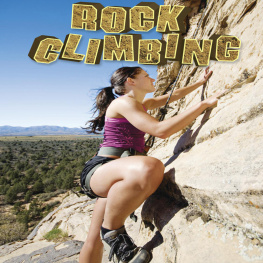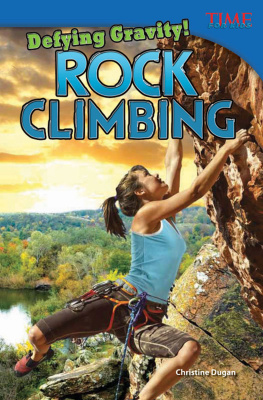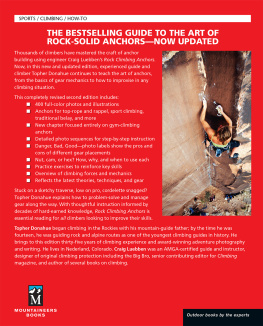Acknowledgments
A debt of gratitude is owed to many people who supported and encouraged me in this project: My editor Kirsten Donovan, videographer Jan Bella, Paul Smith, Steve Passiouras and my proof readers and testers Esther Foster, Ben Francis, Al Halewood, Zoltan Monostori, Rob Mulligan, Chris Pretty, Rebecca Ranstead, Taylor Reed.
A big thank you to the Lakeland Climbing Centre for supporting my growing independent business in their midst. Thank you also to all the climbers, instructors, guides and coaches Ive had the privilege of spending time with, coaching and learning from over the last twenty-two years.
Numerous authors and researchers have informed and inspired my learning, and given me the foundation of knowledge upon which to develop my own ideas.
Last, but not least, to my amazing wife Sue and wonderful daughter Emily for their endless patience and loving support.
This book is intended as an adventure and an exploration of climbing movement. Like any adventure worth having, it will not be an easy journey but with a commitment to work hard on your climbing technique, great gains in personal performance and fulfilment can be had.
Personal responsibility for safety
Climbing is an activity with a danger of personal injury or death. This book provides no safety advice for climbers. Participants in these activities should be aware of and accept these risks and be personally responsible for their own actions.
Introduction
Improving climbing technique can mean many things. Increasing efficiency is one aspect which allows you to climb harder at any given fitness level. Effortless, fluid movement is another. The accompanying feelings of mastery can open the door to a deeply rewarding experience on rock. It can also mean finding flow, experiencing climbing as a dance or a way to celebrate movement and express physical creativity.
Investing in your climbing skills is always worthwhile and doesnt demand a consistent time commitment. If you have limited opportunities to climb regularly, physical training can feel like pouring water into a leaky barrel: you must keep pouring all the time just to maintain a level. To increase the level you must pour faster and faster and if you stop, the level steadily decreases.
Skills development is far less dependent on consistent input. You can practise whenever you can - sometimes more, sometimes less, depending on circumstances. If you take a break for a few months, those skills are still embedded and you can continue to develop them further.
If you have an enforced layoff from fitness training - perhaps due to injury skill development is a great way to maintain motivation and keep improving, while paving the way for excellent performance when you return to form. While I am enjoying the richness of life outside climbing, my own maintenance schedule of up-skilling typically sees me climbing around twice a month. This is enough for me to continue gently consolidating my skill level, in anticipation of periods when I can devote more time to getting climbing fit.
How to use this Book
This book contains five chapters, each focused on a specific area of the body or a specific climbing technique, including a range of practical exercises to introduce and develop skills which can be done at any climbing wall. Chapter Six explores how to apply it all to your climbing and Chapter Seven contains the quick fixes for those really short of time.
Many of the practical exercises are accompanied by a demonstration video, in addition to the written description and illustrations. If you have access to a tablet or smart phone, watching these videos will ensure you learn quickly and easily. There are links to the videos in the e-book version of this publication and they are freely accessible online. From the paper version of this book, you can reach them by scanning the QR code on your mobile device, typing the web address into your browser or by visiting youtube.com and searching for my channel by name.







